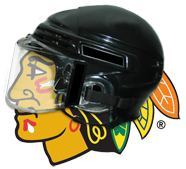
Injury Prevention: There are “Eyes” in TEAM
As I watch the Blackhawks Stanley Cup Rally from my computer (yes, some of us in this town are working today, but WAY TO GO HAWKS!!!), it seems apropos to write about eye injuries in sports and what can be done to prevent them.
Consider this:
• The average hockey puck travels at 90-100 mph
• Pitchers in baseball throw balls at about 95 mph
• Elite squash players strike the ball at 125-145 mph
• Polycarbonate protects against a .22 caliber bullet
The latest statistic I found revealed that sports and recreational activities cause more than 43,000 eye injuries each year. The majority of these occur in persons under thirty years of age. Additionally, sports represent the #1 cause of eye injuries in persons under the age of sixteen. Sports-induced eye injuries, from mild scrapes to severe trauma, can cause visual impairment or even blindness.
The sports with the highest risk include basketball, baseball, hockey, football, lacrosse, fencing, paintball, water polo, racquetball, soccer and downhill skiing. Injuries can come from the ball, puck or other equipment, as well as from opposing players’ fingers and elbows.
The good news is that 90% of these injuries can be prevented with protective eyewear. Polycarbonate, which is 20 times stronger than typical lenses, can withstand a ball or other projectile traveling at 90 miles per hour. Regular eyeglasses and contact lenses do not offer adequate protection. In fact, glass lenses may even shatter and cut the eye.
Eyewear that is properly fitted (by an ophthalmologist or other eye care professional) and consistently worn does not hinder performance in any way. Pro-Athletes like Kareem Abdul-Jabbar, Eric Dickerson and Johnny Bench have excelled in their respective sports while wearing protective eyewear.
More and more children’s sports leagues, schools and teams are requiring children to wear eye protection but there’s still a long way to go. Parents need to insist their own children wear eye protection, and be a role model by wearing protection themselves when playing sports.
Incidentally, the National Eye Trauma System (NETS) is currently collecting data on the frequency and types of eye injuries, including those related to sports, to help identify patterns in sports eye trauma. Chicago’s own UIC Eye Center (a Smart System customer) is one of 50 regional eye trauma centers that are sending the data to NETS.
Sources: Wills Eye, UIC, and Lighthouse
Have a thought about this article? Contact Us and let us know.